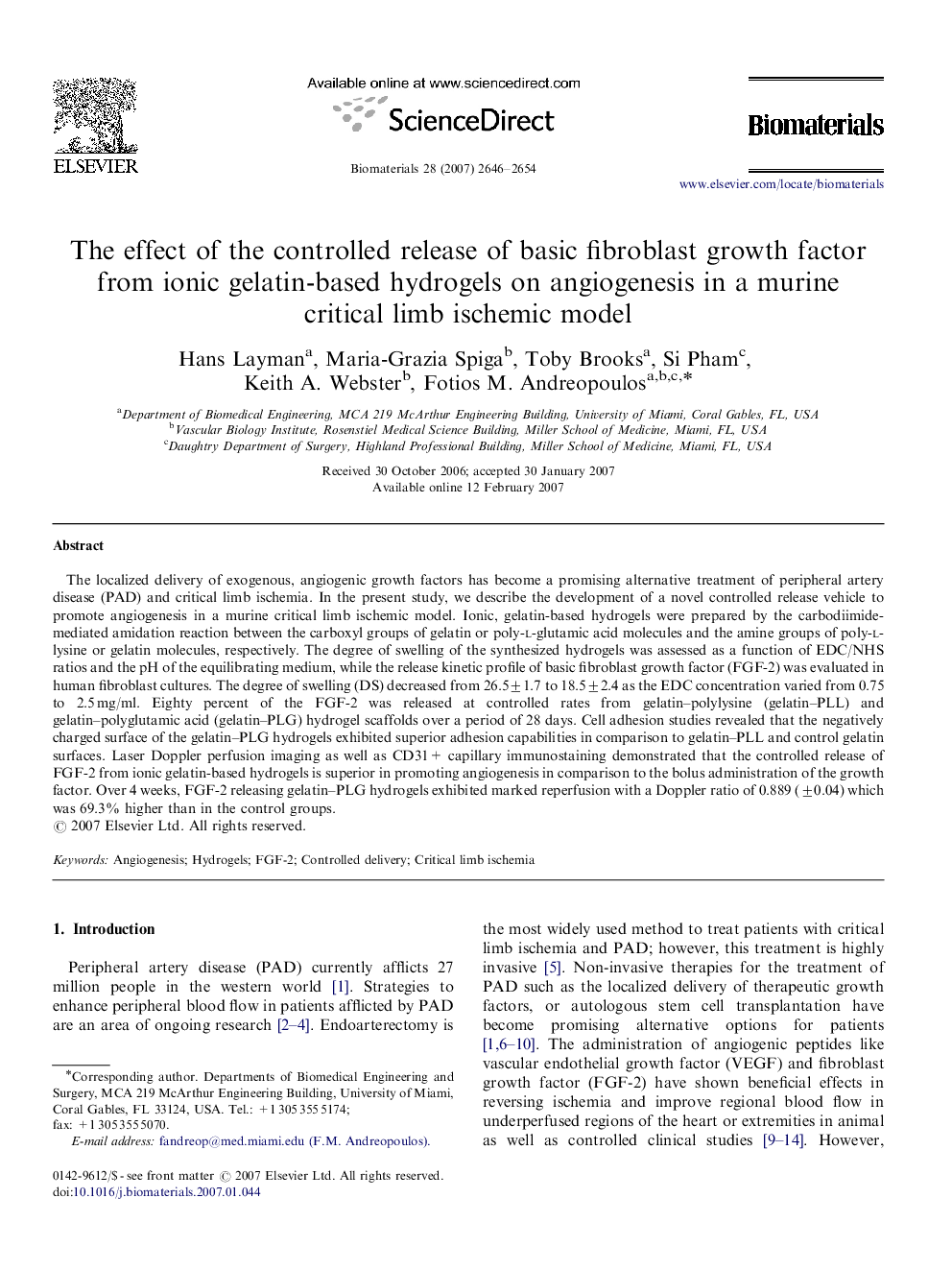| Article ID | Journal | Published Year | Pages | File Type |
|---|---|---|---|---|
| 10074 | Biomaterials | 2007 | 9 Pages |
The localized delivery of exogenous, angiogenic growth factors has become a promising alternative treatment of peripheral artery disease (PAD) and critical limb ischemia. In the present study, we describe the development of a novel controlled release vehicle to promote angiogenesis in a murine critical limb ischemic model. Ionic, gelatin-based hydrogels were prepared by the carbodiimide-mediated amidation reaction between the carboxyl groups of gelatin or poly-l-glutamic acid molecules and the amine groups of poly-l-lysine or gelatin molecules, respectively. The degree of swelling of the synthesized hydrogels was assessed as a function of EDC/NHS ratios and the pH of the equilibrating medium, while the release kinetic profile of basic fibroblast growth factor (FGF-2) was evaluated in human fibroblast cultures. The degree of swelling (DS) decreased from 26.5±1.7 to 18.5±2.4 as the EDC concentration varied from 0.75 to 2.5 mg/ml. Eighty percent of the FGF-2 was released at controlled rates from gelatin–polylysine (gelatin–PLL) and gelatin–polyglutamic acid (gelatin–PLG) hydrogel scaffolds over a period of 28 days. Cell adhesion studies revealed that the negatively charged surface of the gelatin–PLG hydrogels exhibited superior adhesion capabilities in comparison to gelatin–PLL and control gelatin surfaces. Laser Doppler perfusion imaging as well as CD31+ capillary immunostaining demonstrated that the controlled release of FGF-2 from ionic gelatin-based hydrogels is superior in promoting angiogenesis in comparison to the bolus administration of the growth factor. Over 4 weeks, FGF-2 releasing gelatin–PLG hydrogels exhibited marked reperfusion with a Doppler ratio of 0.889 (±0.04) which was 69.3% higher than in the control groups.
